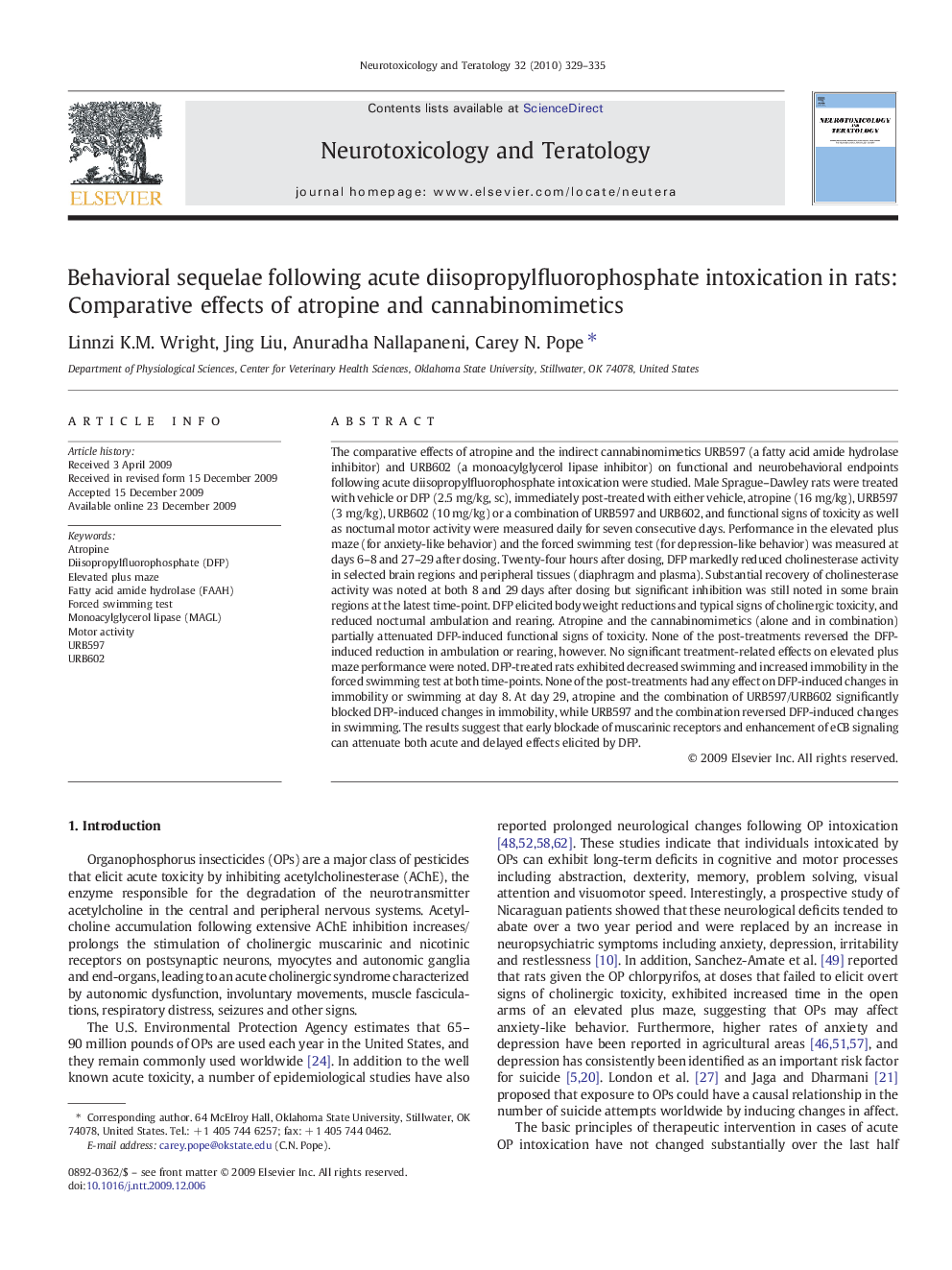| کد مقاله | کد نشریه | سال انتشار | مقاله انگلیسی | نسخه تمام متن |
|---|---|---|---|---|
| 2591801 | 1131829 | 2010 | 7 صفحه PDF | دانلود رایگان |

The comparative effects of atropine and the indirect cannabinomimetics URB597 (a fatty acid amide hydrolase inhibitor) and URB602 (a monoacylglycerol lipase inhibitor) on functional and neurobehavioral endpoints following acute diisopropylfluorophosphate intoxication were studied. Male Sprague–Dawley rats were treated with vehicle or DFP (2.5 mg/kg, sc), immediately post-treated with either vehicle, atropine (16 mg/kg), URB597 (3 mg/kg), URB602 (10 mg/kg) or a combination of URB597 and URB602, and functional signs of toxicity as well as nocturnal motor activity were measured daily for seven consecutive days. Performance in the elevated plus maze (for anxiety-like behavior) and the forced swimming test (for depression-like behavior) was measured at days 6–8 and 27–29 after dosing. Twenty-four hours after dosing, DFP markedly reduced cholinesterase activity in selected brain regions and peripheral tissues (diaphragm and plasma). Substantial recovery of cholinesterase activity was noted at both 8 and 29 days after dosing but significant inhibition was still noted in some brain regions at the latest time-point. DFP elicited body weight reductions and typical signs of cholinergic toxicity, and reduced nocturnal ambulation and rearing. Atropine and the cannabinomimetics (alone and in combination) partially attenuated DFP-induced functional signs of toxicity. None of the post-treatments reversed the DFP-induced reduction in ambulation or rearing, however. No significant treatment-related effects on elevated plus maze performance were noted. DFP-treated rats exhibited decreased swimming and increased immobility in the forced swimming test at both time-points. None of the post-treatments had any effect on DFP-induced changes in immobility or swimming at day 8. At day 29, atropine and the combination of URB597/URB602 significantly blocked DFP-induced changes in immobility, while URB597 and the combination reversed DFP-induced changes in swimming. The results suggest that early blockade of muscarinic receptors and enhancement of eCB signaling can attenuate both acute and delayed effects elicited by DFP.
Journal: Neurotoxicology and Teratology - Volume 32, Issue 3, May–June 2010, Pages 329–335